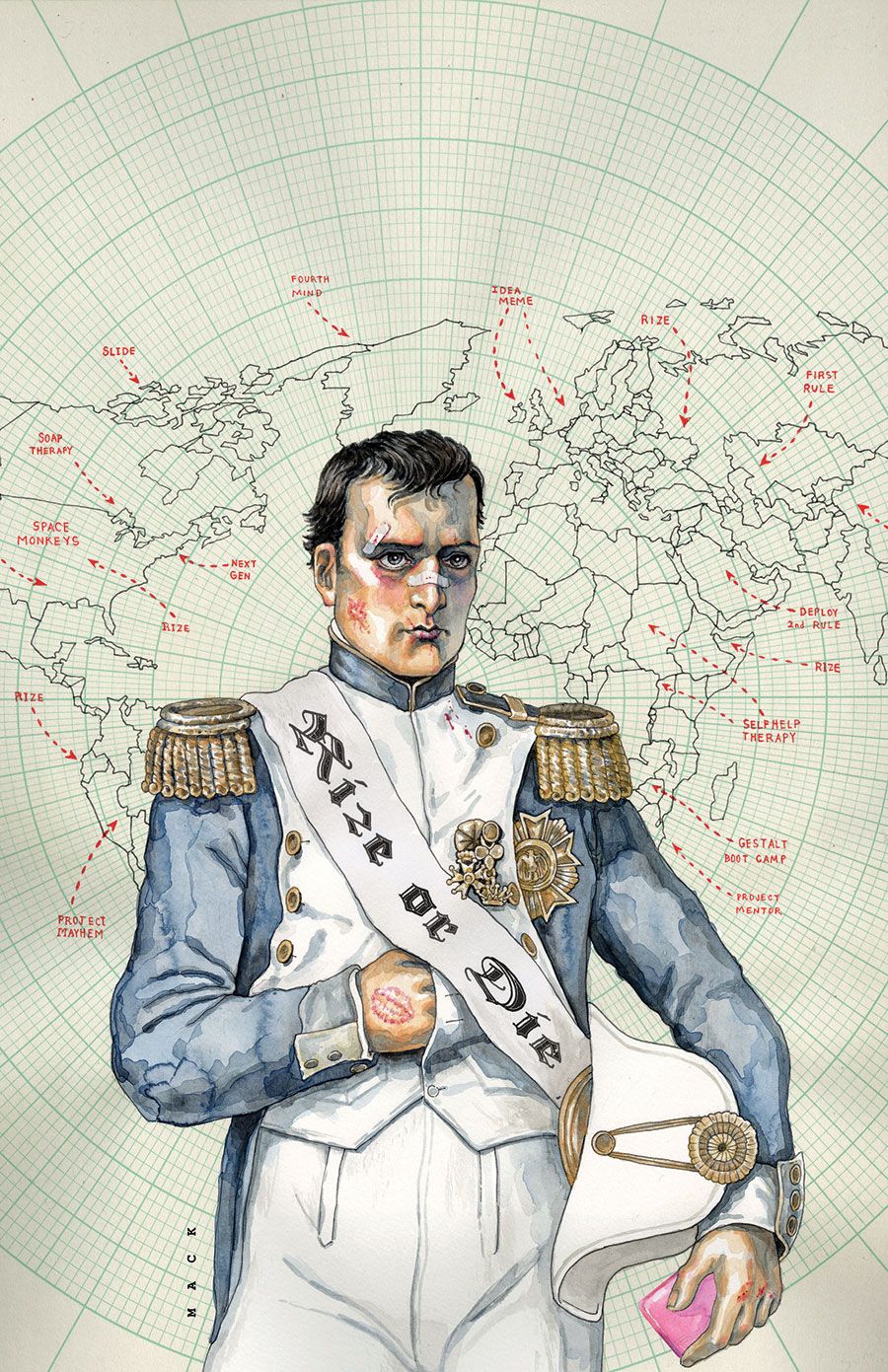"Fight Club 2" is a comic that could have gone horribly wrong. A twisty novel turned into a critically-adored film, the original "Fight Club" stood well on its own and was something writer Chuck Palahniuk could have easily never returned to. As we enter the second half of his "Fight Club 2" miniseries with artist Cameron Stewart, this creation proves itself a worthy sequel as well as a dangerous little puzzle box and impressive creation in its own right.
Palahniuk's script for "Fight Club 2" #6 continues what we've seen up until now, reinforcing the idea that he really understands how to write for comics and works well in the format. He gets that it's as much a visual medium as a written one, and he's not afraid to let Stewart take the reins when necessary. The result is a comic that cuts back and forth between images, avoids duplication of script and weaves flashbacks into a scene in a way that could only work in a visual medium. It's impressive, to put it mildly, for someone relatively new to creating comics.
More importantly, "Fight Club 2" #6 continues what all of the previous issues delivered: an enthralling story. Sebastian and Marla's struggle against Tyler Durden is a strong read, in part because Palahniuk continually unleashes new, crazy ideas into each issue. Sometimes it's merely an aside, like the theory on why Jackie Kennedy grabbed at the assassinated John F. Kennedy's head back in 1963. Instead of feeling like a strange detour, it integrates into the story as a "Wait, what?" moment handled perfectly. Other times, it's something much larger, like Sebastian finally discovering what his therapist has been up to or being given a theory about the true nature of Tyler Durden. It's an idea that reminds me somewhat of Matt Wagner's signature creation "Grendel" and -- just like how that comic took a single figure and grew it into something greater -- Palahniuk takes Durden down a similar road. At first glance, it seems a little too crazy to swallow, but -- the more you think about it (and Palahniuk is careful to remind us of all the evidence leading up to this moment) -- the more possible it feels. That's exactly how big crazy ideas should come across.
Mind you, it doesn't hurt that Stewart is a real master of his craft. Every single panel is carefully constructed to focus on what we need to see, zooming in or out to give us just the right view. I love how expressive Stewart's characters are, with everything from the fear radiating off of Sebastian's face and posture to the glee on Chloe's face when she snaps her fingers and remembers. While Stewart isn't given as many inventive things to do this issue as in past ones, even something like the film strips laid across the second and third pages to serve as dividers stands out as both functional and clever. Colorist Dave Stewart works well with Cameron Stewart, too; his use of bright, vivid hues when Durden is on-panel versus the washed out, dull palette for Sebastian is a wonderful visual tip to the reader.
"Fight Club 2" #6 is another sharp issue in a great miniseries. While there's a lot of care and thought put into this comic, Palahniuk and Stewart don't lose sight of making it fun and exciting too. This isn't just a cerebral exploration; it's an action/adventure story with great art. This issue is probably one of the most standard ones in the series (it has a lot of important information to get across) but, even then, it's great. If you were a fan of "Fight Club," you owe it to yourself to read "Fight Club 2."

